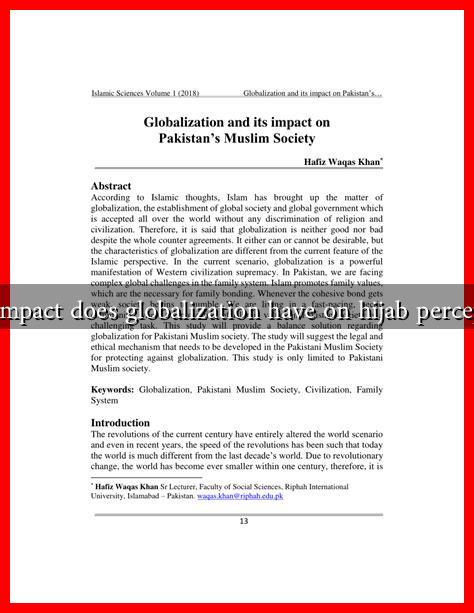-
Table of Contents
What Impact Does Globalization Have on Hijab Perceptions?
Globalization has transformed the way cultures interact, leading to a complex interplay of ideas, values, and practices across the globe. One of the most visible symbols of this cultural exchange is the hijab, a traditional headscarf worn by many Muslim women. As globalization continues to shape societal norms, the perceptions of the hijab are evolving, influenced by factors such as media representation, social movements, and political discourse. This article explores the multifaceted impact of globalization on hijab perceptions, highlighting both positive and negative outcomes.
The Globalization of Culture and Identity
Globalization has facilitated the spread of cultural practices and identities, allowing for a greater understanding of diverse traditions. The hijab, once primarily associated with specific cultural and religious contexts, has gained visibility on a global scale. This shift can be attributed to several factors:
- Media Representation: The portrayal of hijab-wearing women in films, television, and social media has significantly influenced public perceptions. Positive representations can challenge stereotypes and promote understanding, while negative portrayals can reinforce prejudices.
- Fashion Industry Influence: The rise of modest fashion has created a niche market that celebrates hijab as a fashion statement. Designers and influencers are increasingly incorporating hijabs into their collections, showcasing them as symbols of empowerment rather than oppression.
- Social Media Activism: Platforms like Instagram and TikTok have allowed hijab-wearing women to share their stories and experiences, fostering a sense of community and challenging misconceptions.
Positive Impacts of Globalization on Hijab Perceptions
Globalization has led to several positive changes in how the hijab is perceived worldwide:
- Increased Awareness: Global discourse around women’s rights and religious freedom has brought attention to the hijab as a personal choice rather than a symbol of oppression. Campaigns like #HijabDay encourage solidarity and understanding.
- Empowerment and Agency: Many women are reclaiming the hijab as a symbol of empowerment. By choosing to wear it, they assert their identity and challenge societal norms that dictate how women should dress.
- Intercultural Dialogue: Globalization fosters conversations between cultures, allowing for a deeper understanding of the hijab’s significance in various contexts. This dialogue can lead to greater acceptance and respect for diverse practices.
Negative Impacts of Globalization on Hijab Perceptions
Despite the positive changes, globalization has also contributed to negative perceptions of the hijab:
- Islamophobia and Stereotyping: In many Western countries, the hijab is often associated with extremism and terrorism, leading to discrimination and prejudice against Muslim women. This stereotyping can result in social exclusion and marginalization.
- Commercialization and Misrepresentation: The fashion industry’s appropriation of the hijab can sometimes lead to misrepresentation, where the cultural and religious significance is overshadowed by commercial interests.
- Political Backlash: In some countries, the hijab has become a focal point for political debates about immigration and national identity. Policies banning the hijab in public spaces can further stigmatize its wearers.
Case Studies: Global Perspectives on Hijab
Examining specific case studies can provide insight into how globalization affects hijab perceptions in different regions:
- France: The 2004 law banning religious symbols in public schools has sparked significant debate about secularism and religious freedom. This policy has led to increased stigmatization of hijab-wearing women, highlighting the tension between cultural identity and national values.
- Turkey: The lifting of the ban on hijabs in public institutions in 2013 marked a significant shift in societal attitudes, reflecting a growing acceptance of religious expression in a secular state.
- United States: The rise of Muslim influencers and activists has contributed to a more nuanced understanding of the hijab, promoting it as a symbol of identity and resistance against Islamophobia.
Conclusion
Globalization has had a profound impact on the perceptions of the hijab, leading to both positive and negative outcomes. While it has facilitated greater awareness and empowerment for hijab-wearing women, it has also contributed to stereotyping and political backlash. As cultures continue to intersect, it is essential to foster dialogue and understanding to challenge misconceptions and promote respect for diverse identities. Ultimately, the hijab remains a powerful symbol of personal choice and cultural identity, reflecting the complexities of globalization in our interconnected world.
For further reading on the topic, you can explore resources such as Pew Research Center, which provides insights into global religious trends and their implications.


